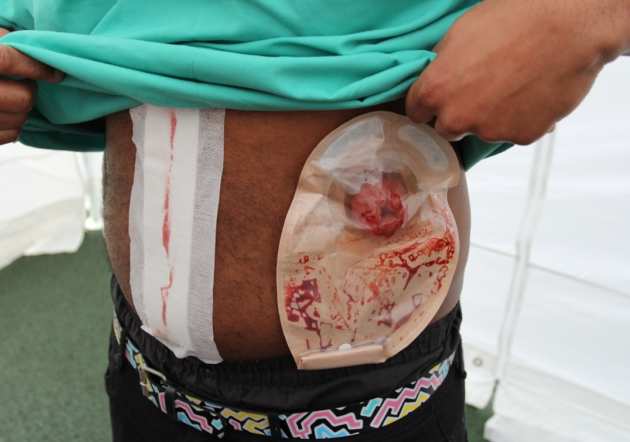We use sets, props, prosthetics and real professionals to deliver simulations of real-life clinical scenarios for a variety of purposes including training, education, system re-design, patient/public involvement and quality improvement. At ICCESS we have developed a range of tools and approaches in order to design, develop and undertake physical simulations in a robust and methodical way that is grounded in empirical and theoretical data.
Our approach ensures that we are not only at the forefront of innovative uses of physical simulation, but we also ensure quality and academic rigour in what we design and present, due to our combined iterative research approach.
ICCESS uses three different approaches to physical simulation. Hybrid simulation applies lifelike prosthetic devices to professional actors. Distributed simulation (DS) is a term we developed to represent our realistic yet low-cost and portable simulation environments. We have also developed Sequential Simulation (SqS), which involves simulating sequences of events along a patient care pathway. These are descibed in more detail below.
Research objectives
- Developing models that can be used to design and evaluate physical simulation in an objective-based, measurable and robust way.
- Designing new simulation methods and tools that are not restricted to traditional simulation facilities which are often static and costly.
- Extending the application of existing simulation methods across healthcare-related areas.
- Drawing on examples of real practice when designing and delivering simulation to ensure authenticity.
Examples of physical simulation
Hybrid simulation
 Highly realistic prosthetics are applied to the bodies of real people (usually professional actors) so that they resemble sick or injured patients. The photo on the left shows a prosthetic colostomy.
Highly realistic prosthetics are applied to the bodies of real people (usually professional actors) so that they resemble sick or injured patients. The photo on the left shows a prosthetic colostomy.
Distributed simulation
Big Bang Excerpt
Low-cost, portable equipment and backdrops provide 'realistic enough' recreations of clinical settings. This allows medical simulation to be delivered in any type of venue, without the need for costly dedicated facilities. We have delivered simulations at science festivals, museums, public parks, music festivals and a wide range of other venues.
Sequential Simulation
Simulation Edit (June 2015)
A Sequential Simulation (SqS) features recreations of key parts of a patient's journey through the healthcare system. It provides the opportunity for audiences to see the care pathway from a patient's perspective, identify problems with the current system and suggest potential improvements.
Sequential Simulation is an ongoing research project in its own right, as part of Senior Research Officer Sharon-Marie Weldon's PhD. Find out more about Sequential Simulation (SqS).
Key publications
Hybid simulation
Kneebone, R., Kidd, J., Nestel, D., Asvall, S., Paraskeva, P. & Darzi, A., 2002, An innovative model for teaching and learning clinical procedures, Med.Educ., 36(7), pp. 628-34.
Kneebone, R., Nestel, D., Wetzel, C., Black, S., Jacklin, R., Aggarwal, R., Yadollahi, F., Wolfe, J., Vincent, C. & Darzi, A., 2006, The human face of simulation: patient-focused simulation training, Acad.Med, 81(10), pp. 919-24.
Kneebone, R.L., 2009, Practice, rehearsal, and performance: an approach for simulation-based surgical and procedure training, JAMA, 302(12), pp. 1336-8.
Distributed simulation
Kassab, E., Tun, J.K., Arora, S., King, D., Ahmed, K., Miskovic, D., Cope, A., Vadhwana, B., Bello, F., Sevdalis, N. & Kneebone, R., 2011, "Blowing up the barriers" in surgical training: exploring and validating the concept of distributed simulation, Ann Surg, 254(6), pp. 1059-65.
Sequential Simulation
Weldon, S-M., Kneebone, R., Bello, F. (2016). Collaborative Healthcare Remodelling through Sequential Simulation (SqS): A Patient and Front-line Staff Perspective. BMJ Simulation & Technology Enhanced Learning.

